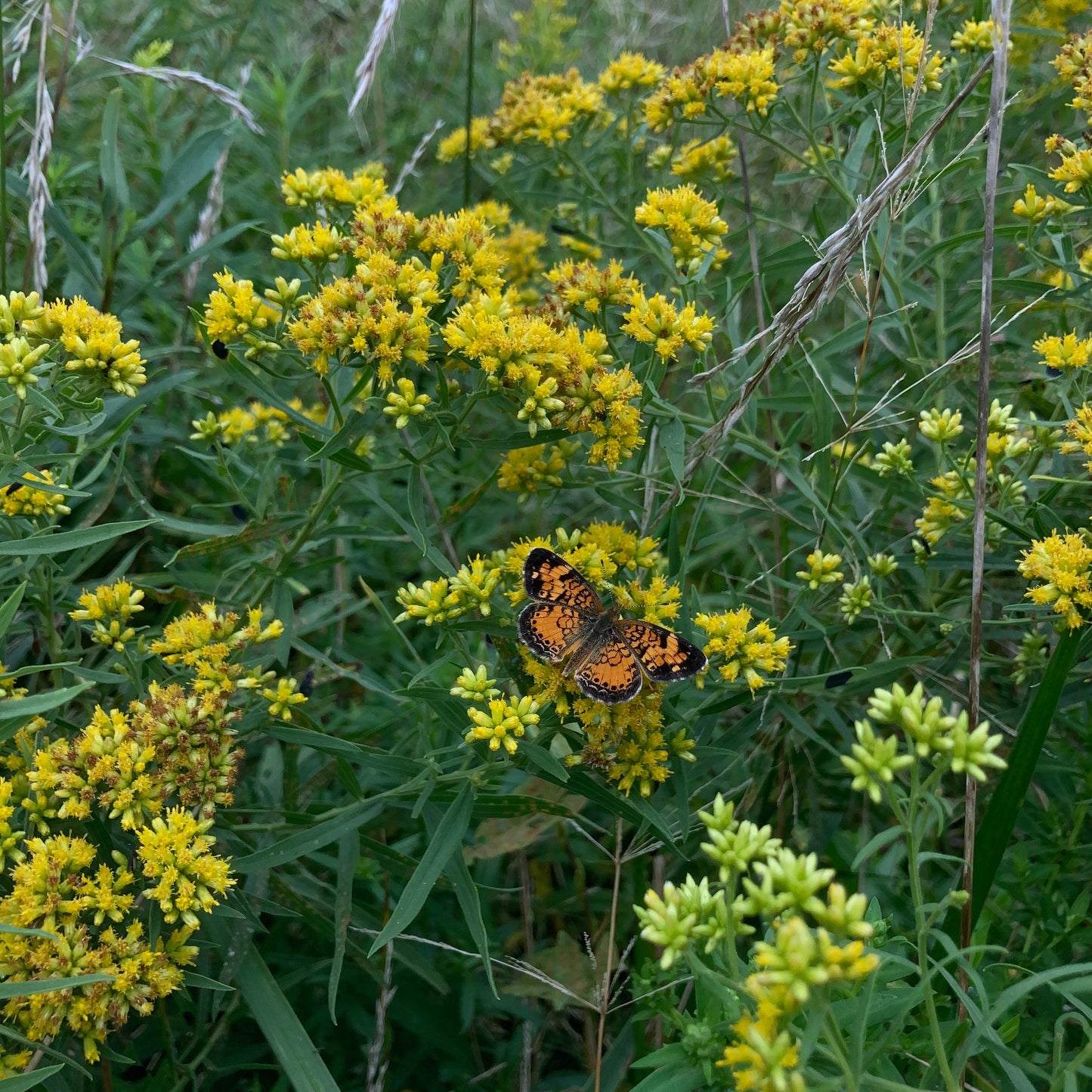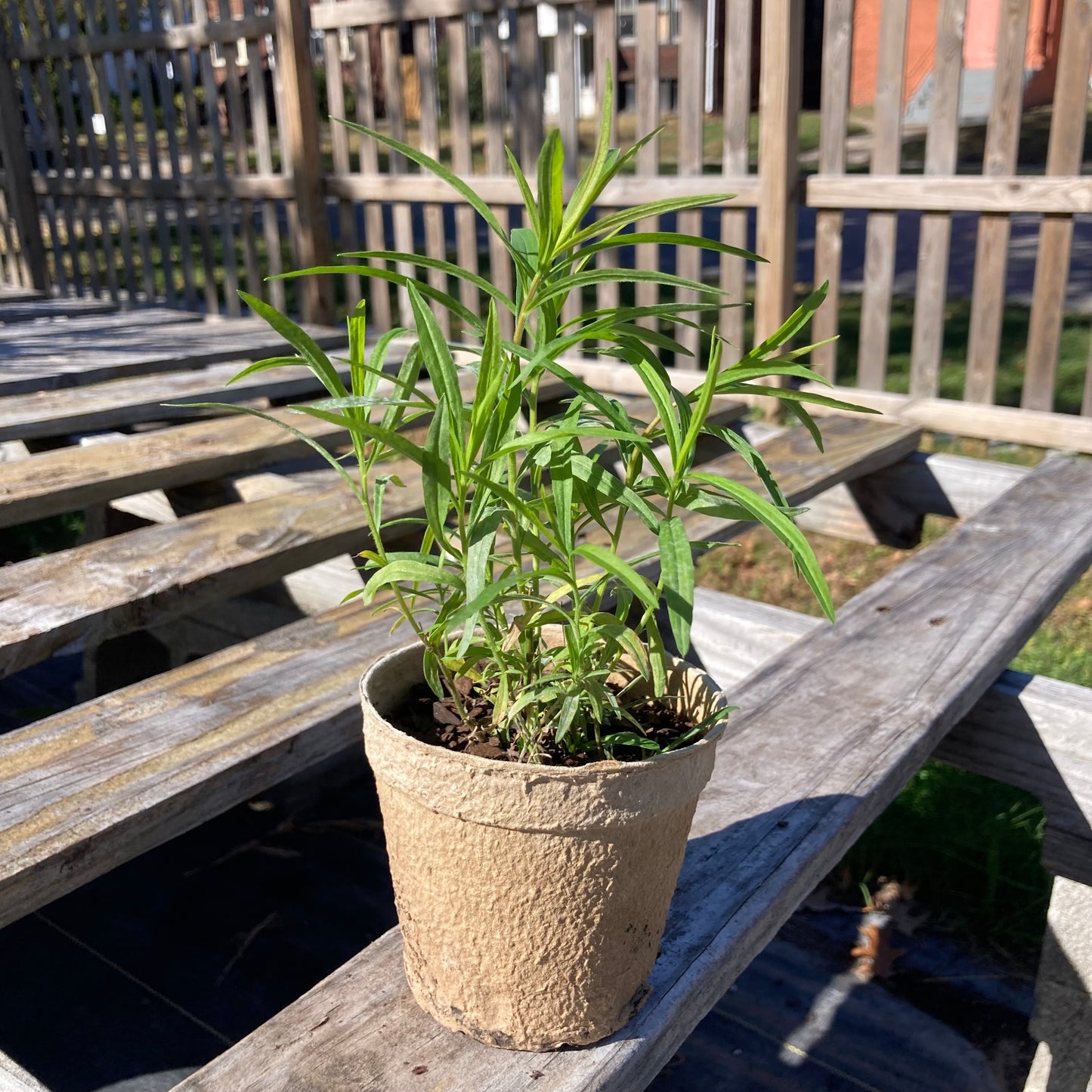Grass-leaved goldenrod
Euthamia graminifolia
Euthamia graminifolia
36 remaining
Couldn't load pickup availability
Sun/shade: Full sun to part shade
Soil moisture: Dry to wet
Height: 3-4'
Flowering period: August
Deer resistance: Medium
Grass-leaved goldenrod’s yellow flower clusters have a rich, textured appearance that mimics the play of the late summer sunlight upon the wild meadow. Blooming for approximately one month, the plant provides nectar and pollen to a plethora of bees, flies, wasps, moths, and butterflies.
An inhabitant of fields, wet meadows, and marsh edges, grass-leaved goldenrod prefers full sun and moist soil, but tolerates partial shade and drier soil. The plant’s narrow leaves and slender form make a fine textural component in the garden, and its broad yellow blooms provide color in August. When planted with tall ironweed and common boneset, grass-leaved goldenrod is part of a bold floral display.
Grass-leaved goldenrod spreads quickly by rhizome to fill in any adjacent space that is bare of vegetation. The rhizomes are shallow, though, and the new stems are easily pulled in the springtime. This plant is highly recommended for gardeners who are looking for a plant to rapidly occupy an area.
Grass-leaved goldenrod is commonly found growing on abandoned farmland in association with other goldenrod species, including tall goldenrod, giant goldenrod, wrinkleleaf goldenrod, and early goldenrod. Research suggests that soil factors including heightened moisture, acidity, and clay content increase grass-leaved goldenrod’s ability to compete with these other species.
Photo 1 by Ashley Keesling. Photos 2 and 3 by Julie Slater.







